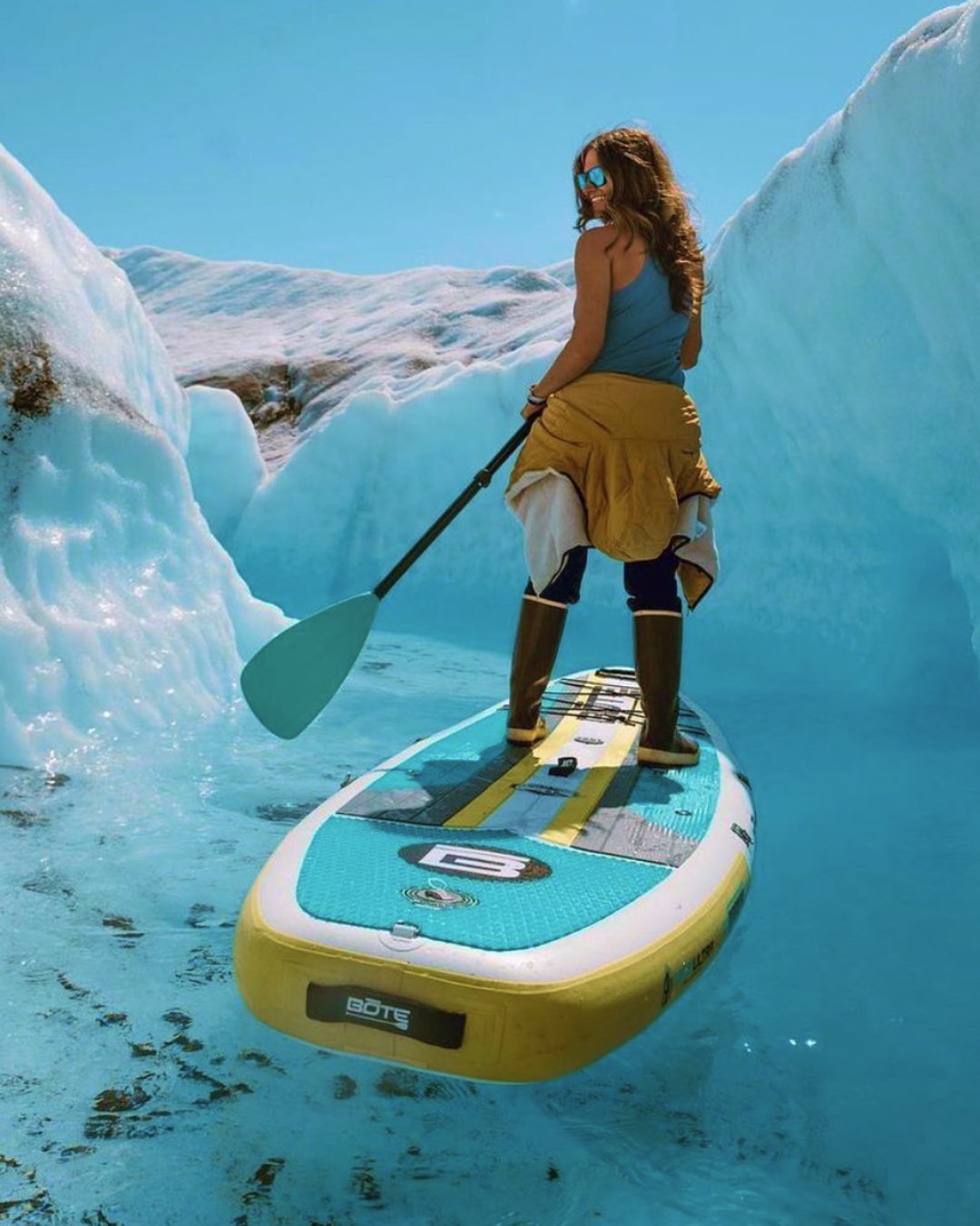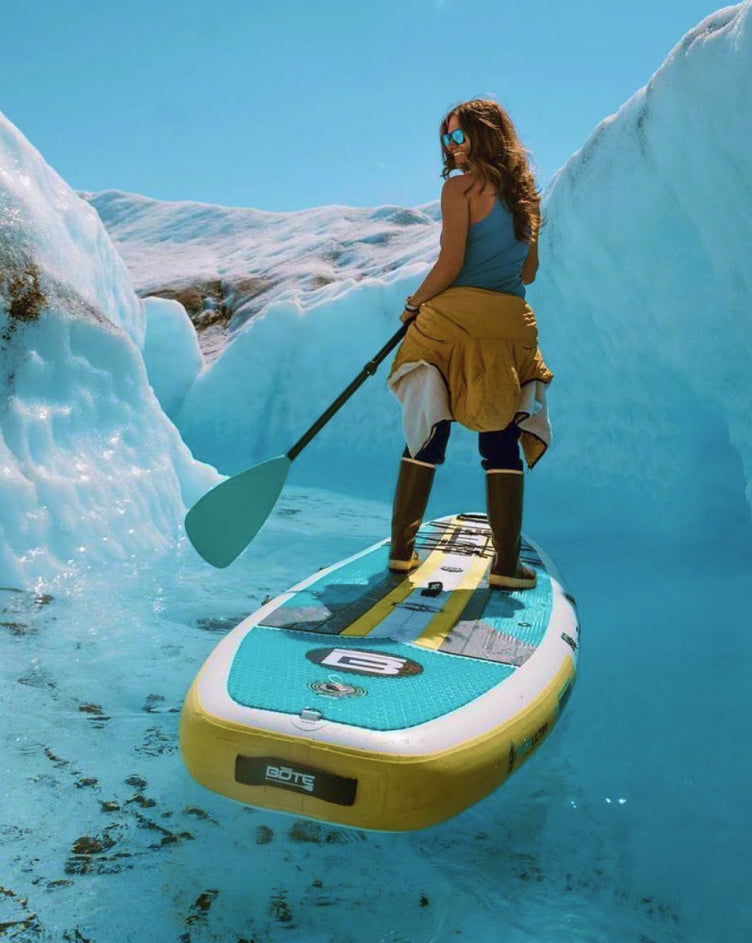SUP Surfing: Why Paddle Boards Can Be Great For Surfing
So you’ve mastered the flat, calm intercoastal waters but want to venture out and catch a few waves, you may be tempted to buy or rent a surfboard from the local surf shop. But, before you add yet another board to your fleet, you may find that the paddle board you already own can be a great option for catching your first wave.
Many paddle boards, including the Flood Series, have a planing style hull. This hull style is modeled off of surfboard hulls--wide and flat--allowing the board to glide on top of the water. We pair our planing hull boards with an entry rocker nose that tilts up, keeping the nose of the board over the water when dipping down on the face of the wave, enabling you and your board to glide forward and gain speed.
Advantages Of Paddle Board Surfing
On my last surf trip to Costa Rica, I rented a shortboard from the local surf shop for about $30 a day. I remember sitting in the water with a buddy complaining about how the longboarders and SUP surfers were catching all the waves. It seemed like they were expending a lot less effort and catching a lot more waves. Meanwhile, there we were, paddling with all the strength in our arms, working really hard for our turns, and had a hell of a time catching them.
Needless to say, I learned my lesson.
Whether you live near the water and rotate between flat water and waves, or you take annual surf trips to Costa Rica or Nicaragua, a solid or inflatable paddle board with a flat, planing hull is a great multi-purpose board to do it all. In essence, a planing hull paddle board is a longboard in surf terms. Longboards offer a fast, smooth ride thanks to their size and shape. What you lose in mobility over a shortboard, you gain in stability.

It's Logistics
Fact: You will catch more waves paddle surfing because you are already standing up when the wave comes.
The biggest learning curve with traditional surfing is the pop up. The pop up is when you quickly jump from laying down to standing up just as the wave catches up with your board and starts moving you forward. If you can perfect the pop up and time it with the oncoming wave, with just a little bit of balance you’re ready to shred.
The beauty of paddle surfing is that you’re already standing up when the wave catches you, plus you have a paddle to help propel the board forward more efficiently and catch the wave. By paddle surfing, you remove the greatest barrier to entry and get to the having fun part a lot faster.
Think about it like riding a bike. Sitting on a bike that isn’t moving is incredibly difficult. Once that bike starts moving forward it is a lot easier. So if you’re already standing up on your board and begin to paddle forward as the wave comes, you have taken the most difficult part of the equation out.
Buoyancy and Traction are Key
Paddle boards are a lot more buoyant than traditional surfboards, so standing up--with or without a paddle--is a lot easier to do. Paddle boards also have much larger deck pads than a traditional surfboard. Some surfboards have an entirely smooth surface for maximum speed, while others have small deck pads, called traction pads, toward the back to assist with the pop up and carving waves.
It always goes back to the pop up. Due to the larger size of a paddle board and expanded deck pad, you won’t be able to make turns as easy but you will have more stability.
Greater Visibility
When paddle surfing--that is, surfing with a paddle on a paddle board--your visibility is infinitely better than anyone sitting on their board staring at the horizon. By gaining a few feet of height over traditional surfers, you’re in a better position to gauge the intensity, size and speed of the waves coming toward the coastline.
Overall Versatility
You can fish on it, do yoga on it, chill on it, surf on it. The versatility of paddle boards is vast, allowing you to use them beyond one hobby. For the true hobbyist with a lust for adventure, paddle surf in the morning then jig for pompano or look for schooling redfish right off the beach in the afternoon. You can truly do it all on a quality stand up paddle board built for your size and lifestyle.

Basic Surf Etiquette
Convinced surfing or SUP surfing might be your next hobby? There are a lot of unspoken rules when lining up to catch a wave, particularly with seasoned surfers and locals. Here are a few important tips for staying safe and having fun:

- The surfer closest to the peak has the right of way.
- One person per wave. “Dropping in” is highly frowned upon.
- Don’t get in the way. Respect the person who catches the wave or has the right of way by laying low until their wave passes.
- The furthest out takes priority--which are typically longboarders or paddle surfers. However, don’t be a wave hog.
- Wipeout safely. Wear your leash. Maintain control of your board so it doesn’t hit anyone nearby. Don’t dive in head first--you never know how close the bottom can be.
- Be patient. There will always be another wave.
It boils down to respecting other surfers in the line up and respecting the waves. We all know how powerful waves can be near the shore and intercoastal waters. Taking these precautions will help to create space and order in the line up so you can avoid acting like a total kook the first time you paddle out.

Choosing Your Surf-Style Paddle Board
You hear a lot about paddle board fishing, SUP yoga, and recreational paddling, but you may not realize that paddle board surfing is a great activity for your BOTE board. The BOTE Flood Paddle Board series, both Gatorshell and AeroBOTE options, are true do-it-all boards for coastal water, because they’re fun as hell to surf, too.
Here are a few reasons why we love the Flood for surfing:
- It doubles as a surf style board thanks to its flat, planing hull.
- The two size options, 10’6” and 12’, are great longboard options for beginners.
- It comes with a paddle, so paddle surfing is a natural first step.
Whether you have a solid paddle board or an inflatable SUP, it’s possible to surf your SUP based on your skill level and the intensity of the waves. We’re not saying we designed every stand up paddle board with surfing in mind, but under the right conditions and with a little skill you can surf half the solid and inflatable SUPs across the BOTE line up.










